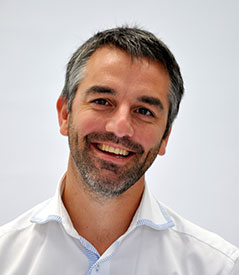
Dr. Van Tongel
University Hospital Ghent, Belgium
A young patient with a painful deformity in his clavicle, which was causing him both cosmetic and functional issues, consulted Dr. Van Tongel in 2014. Prof. dr. Alexander Van Tongel is a Senior Lecturer in Orthopedics and Team Leader at the Department of Human Structure and Repair at the University of Ghent, Belgium.
Full preoperative collaboration online
When performing a 3D analysis, Materialise Clinical Engineers visualize a specific bony deformity in 3D by comparing the surgical side with an overlay of the mirrored contralateral healthy side as a reference.
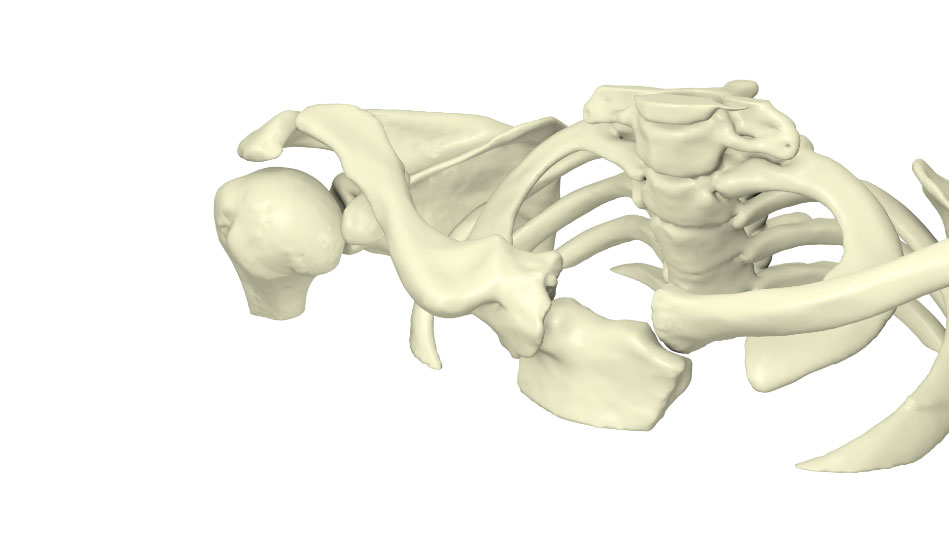
3D simulation of the preoperative situation
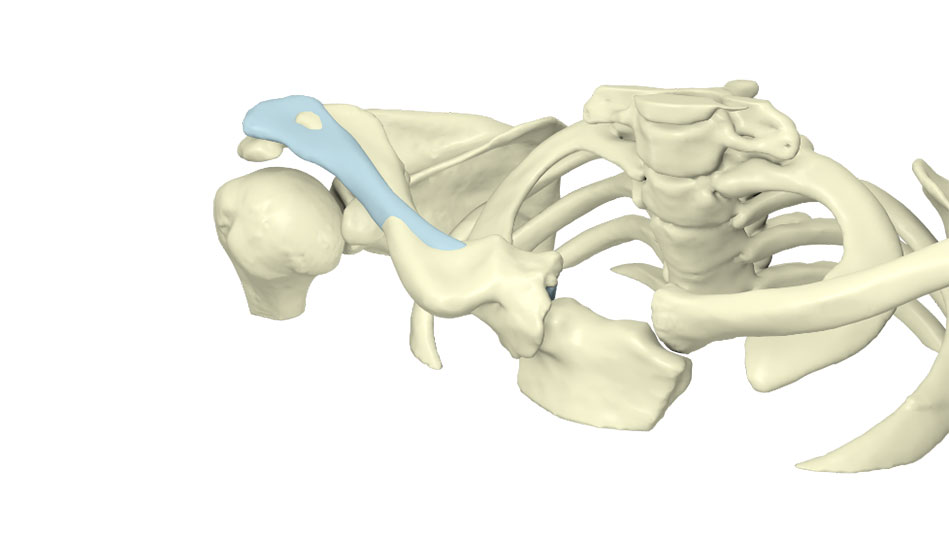
3D simulation of the planned outcome with overlay of the mirrored contralateral side
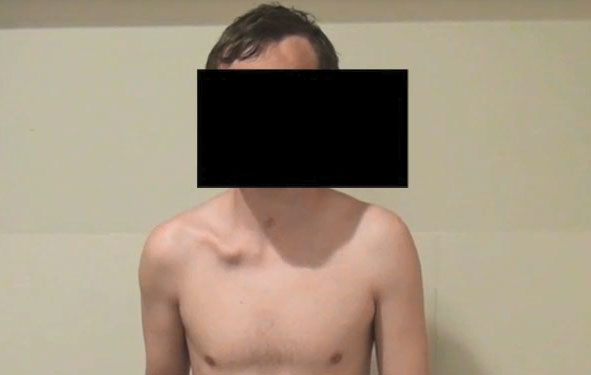
Picture of the patient before surgery
In this case, the comparison showed a shortened clavicle with an excess of callus at the sterno-clavicular joint. This deformity caused a cosmetic issue as well as pain. Based on these complaints, Dr. Van Tongel (University Hospital Ghent, Belgium) opted for a corrective osteotomy.
The next step in the preoperative planning process involves the simulation of one or more osteotomies and fragment reductions by the clinical engineers to discuss an optimized patient-specific outcome with the surgeon. In this case, Dr. Van Tongel decided to remove a wedge of excess bone and reduce the lateral fragment.
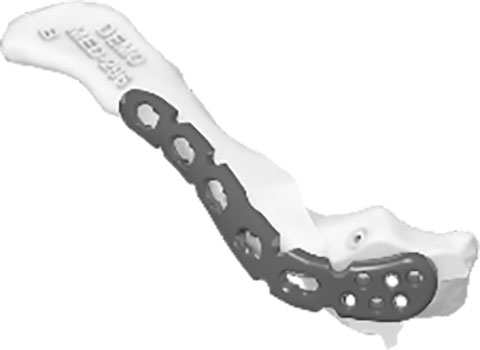
These types of clavicle procedures commonly use off-the-shelf plates, but the callus on this patient’s clavicle added contour to the bone and standard plates would not sit flat. Fortunately, creating a 3D plan in the virtual environment enabled Materialise clinical engineers to simulate the required plate bending and subsequent screw trajectories to ensure proper fixation. Once the surgical plan was discussed with and approved by the surgeon, the clinical engineers designed patient-specific surgical guides.
Extensive guidance from start to finish
Materialise designed patient-specific instruments for this corrective osteotomy, including cutting and drilling guides. First, the 3D-printed drilling guides were used to guide the pre-drilling of the screw holes. Then, the cutting guide with cut slots and/or flanges were used to guide the saw blade for the osteotomy.
Additionally, the surgeon was provided with an anatomical model of the bone prior to surgery and helped to save OR time by pre-operatively bending the plate to the model before entering the OR.
Dr. Van Tongel also received a full case report detailing the surgical plan, including the approximate screw lengths of the 11 screws used for fixation. This extensive guidance was much appreciated by the team.
Throughout the process, the online SurgiCase platform was used for quick and effective communication. The surgeon team easily uploaded the CT scan images to this platform. Afterwards, the Clinical Engineers could display the 3D analysis and design in the Viewer section. Logging into the same platform, the surgeon can assess the correction and fixation options throughout the surgical planning process and adjust and approve the final plan at his convenience.
For more information on what 3D Planning and Printing can do for you:
Visit http://www.materialise.com/osteotomies
Contact your account manager at medical@materialise.com
